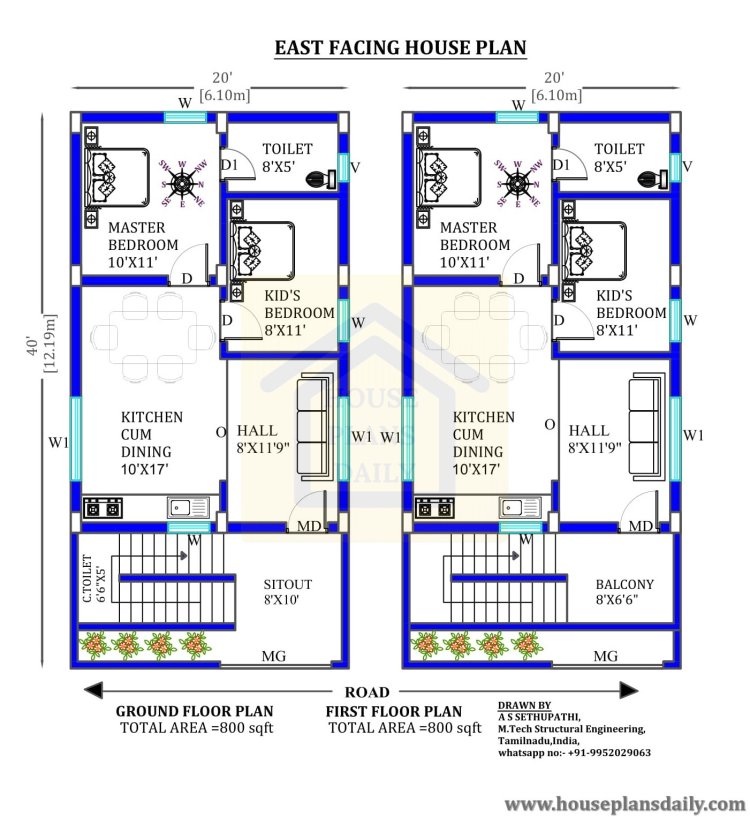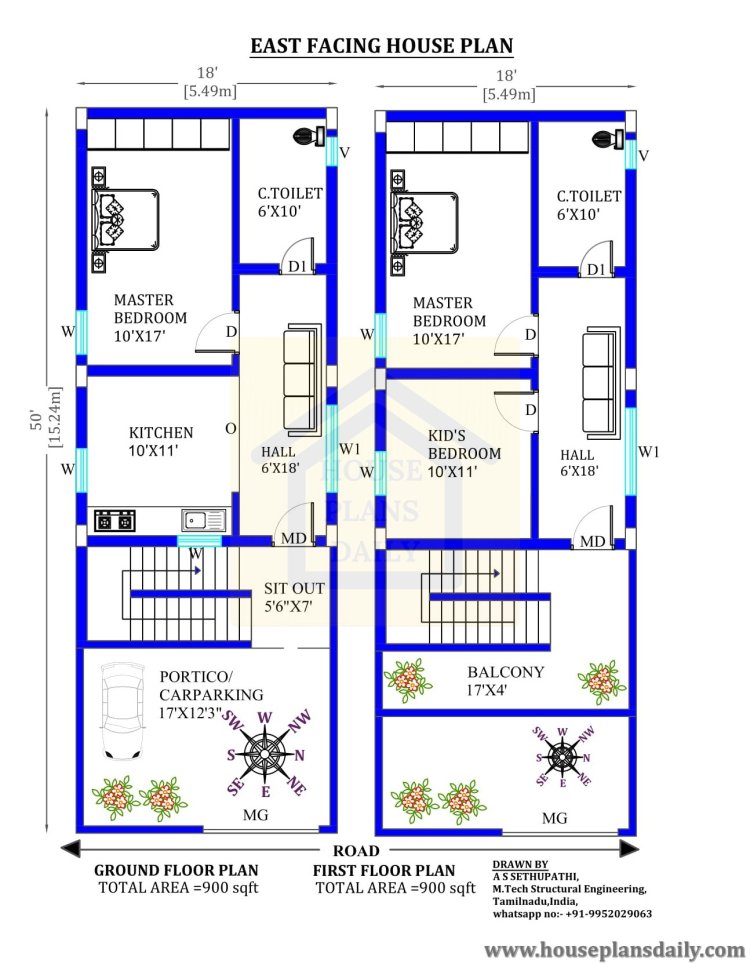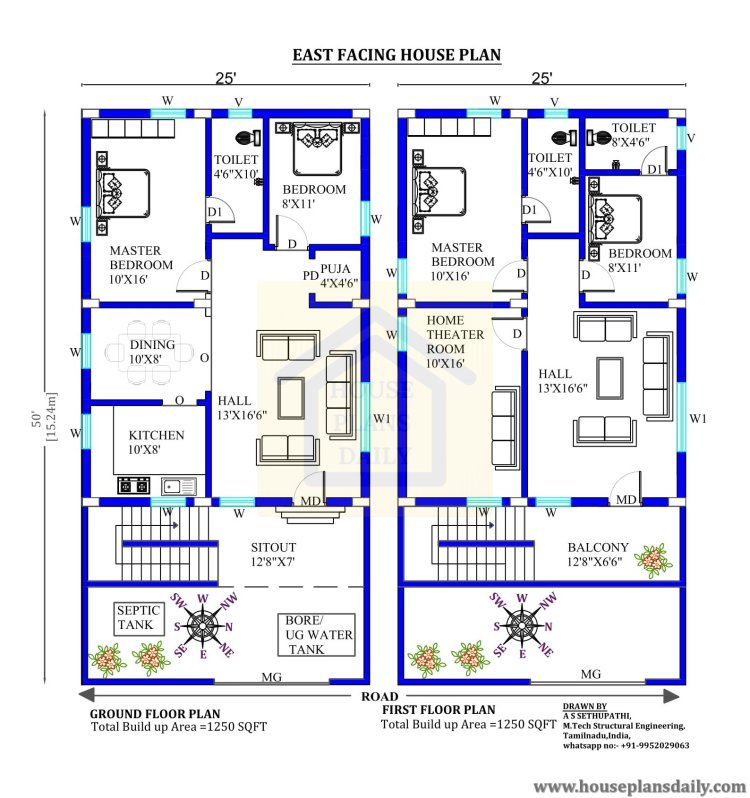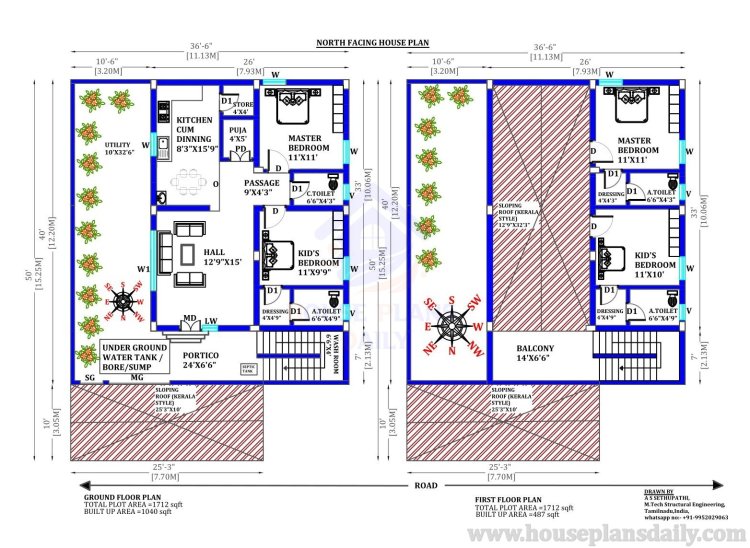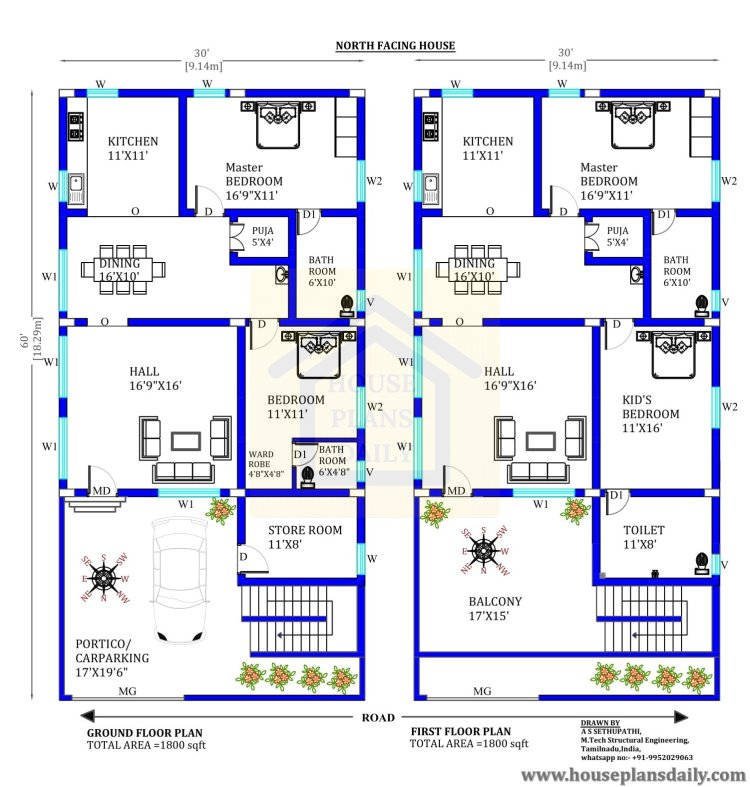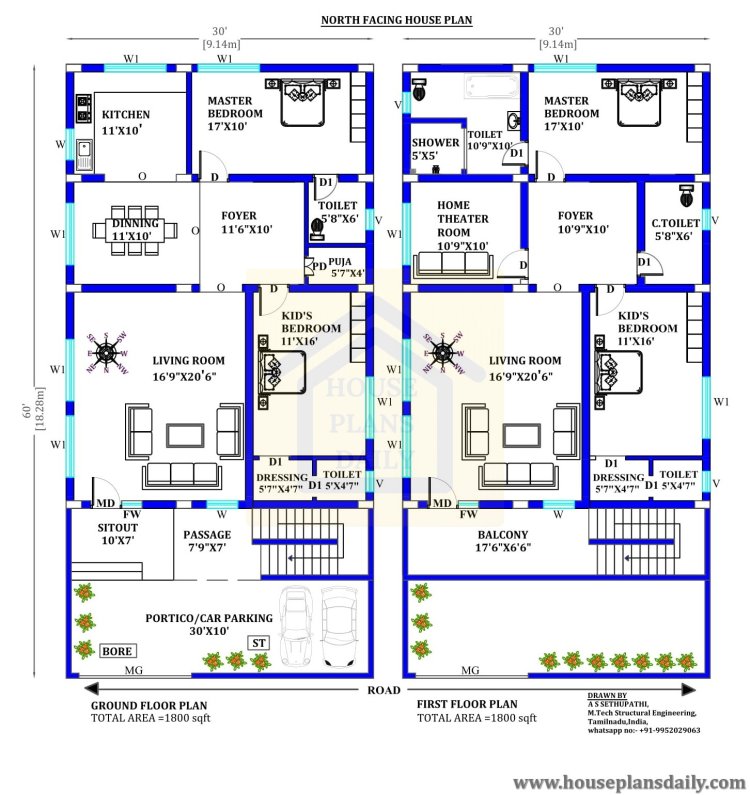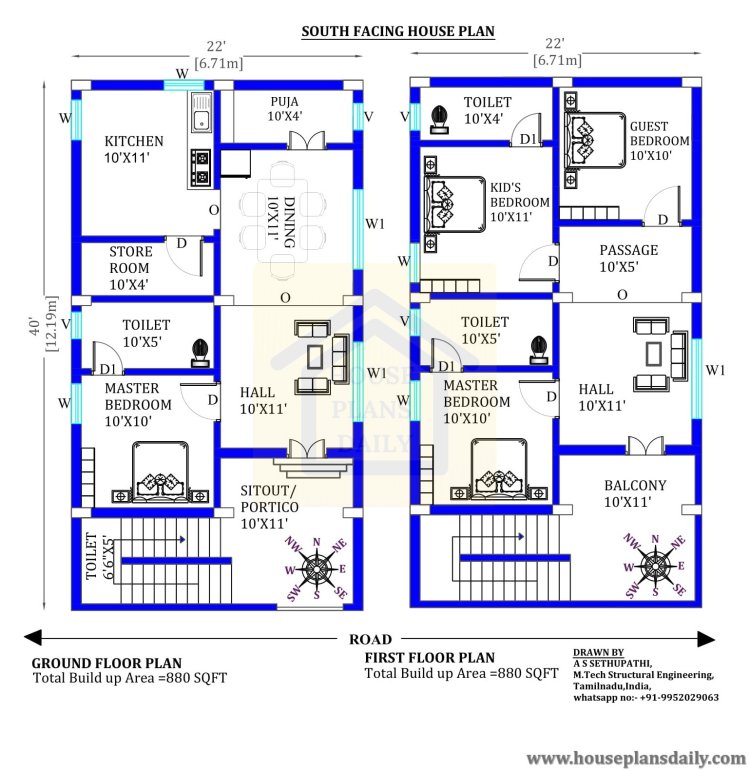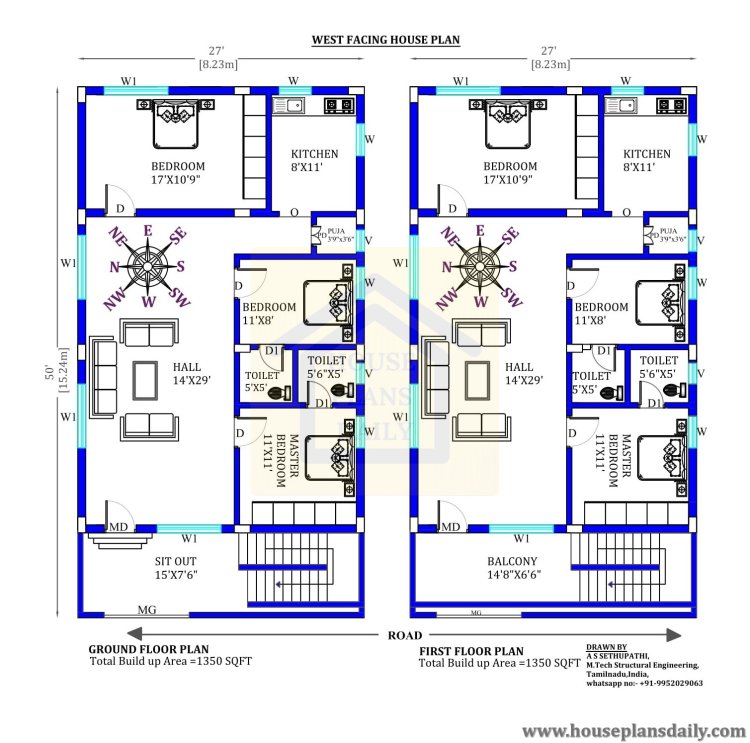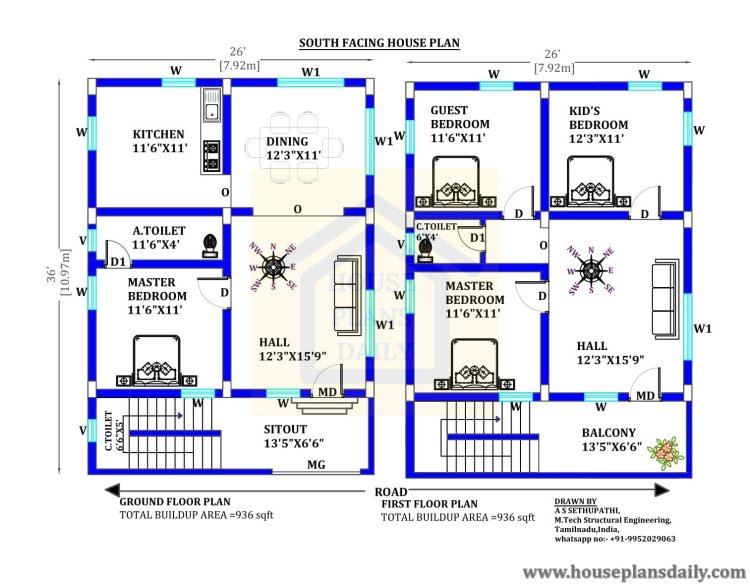Vastu Shastra Home Design and Plans
Vastu Shastra, the ancient Indian system of architecture, harmonizes our homes with the natural elements, enlivening a tranquil environment conducive to prosperity and happiness. Originating from deeply rooted spiritual traditions, this intricate science furnishes principles for the construction of buildings, focusing on the integration of the five fundamental elements - earth, water, fire, air, and space. A purposeful embrace of Vastu Shastra in home design and plans introduces a remarkable balance between the built environment and the natural world. This essay unfolds the intriguing aspects of this architectural wisdom, illuminating its key elements and guiding you on their practical applications in crafting various rooms of your house. Brimming with engaging insights, reading this will undoubtedly enrich your understanding, allowing you to harness the benefits of adhering to Vastu Shastra.
Introduction to Vastu Shastra
Understanding Vastu Shastra
Vastu Shastra is an ancient Indian system of design and architecture, akin to Feng Shui, designed to bring harmony between a dwelling and the forces of nature. Originating from around 6000 B.C., this science provides hypothetical guidelines for the construction of homes, towns, cities, gardens, roads, water works, etc. The principles of Vastu Shastra revolve around the arrangement of five elements - earth, water, air, fire and space in a way that they create a congenial environment for human habitation.
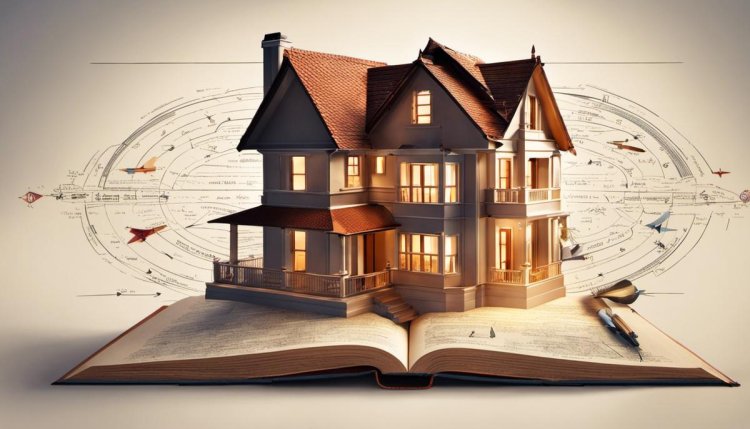
Importance of Vastu Shastra
The significance of Vastu Shastra lies in the belief that it brings wellness and prosperity into a person's life by harmonizing nature's energy within the dwelling. It employs geometric patterns (yantra), symmetry, and alignments to enhance the health, wealth, and happiness of the inhabitants. By obeying the universal laws of nature, it is believed that human beings can reap benefits beyond their expectations.
Applying Vastu Shastra to Home Design and Planning
Vastu Shastra's application to home design and planning starts right from choosing the plot of land for the home. It is recommended the plot should be square or rectangular with the corners 90 degrees straight. The house should be placed in centre with open space around.
Further, each direction has its own significance. The house entrance in North, East or North-East brings prosperity. The master bedroom should ideally be in the South, South-West, or West. Bathrooms and toilets in the North-East corner are to be avoided, while the kitchen should ideally be in the South-East corner of the house.
It is also suggested to avoid having a tall tree casting a shadow on the house, as it's considered to obstruct positive energy. Moreover, the center of the house, known as the Brahmasthan, should ideally be kept empty to ensure a free flow of energy.
Basic Principles and Philosophy
The basic philosophy of Vastu Shastra is attaining peace, prosperity and extreme positivity in an individual’s life through harmonically designed living spaces. The main principle is to combine the five elements and harness energy from nature to create a spiritual, uplifting living environment. It involves the mathematical calculation of the space's geographical situation, the level of the land, and orientation of the site, the road around the building among others.
The alignments and aspects of different parts of the house are vital in Vastu Shastra. It is believed that every particle in the universe has a level of energy associated with it, and by following the principles of Vastu Shastra, this energy can be harnessed to create a comfortable, auspicious and harmonious living environment.
From a practical standpoint, Vastu principles also encourage designs that promote good ventilation, natural sunlight, and efficient space utilization, which contribute to the physical comfort and wellbeing of the residents.

Key Elements of Vastu Shastra
Understanding the Five Elements of Vastu Shastra
Vastu Shastra, commonly known as the science of architecture, is all about the synchronization of the home with the elements of nature - earth, water, fire, air, and space. Each of these elements represents a specific energy and influences the harmony and prosperity of a dwelling.
Earth (Bhumi)
The earth is all about stability and balance. It suggests the north-east part of your home should be lighter compared to the south-west portion. To achieve this, design bigger rooms, walls and floors more heavily in the south and west compared with the north and east. Avoid heavy construction in the middle to ensure proper magnetic field.
Water (Jal)
This element deals with flow and circulation. It’s suggested that water bodies such as wells, bore wells and swimming pools be placed in the northeast for optimal flow of positive energy. Bathrooms and kitchens should ideally not share a wall, and pipes should be regularly checked for leaks to prevent negative energy.
Fire (Agni)
Fire correlates with radiance and energy. The fire element signifies light and heat, which should be in the south-east direction. Kitchens, fireplaces, and electrical appliances are best placed in the southeast sector of the house. Additionally, avoid placing these things in the north-east as it disrupts the balance.
Air (Vayu)
The air element is responsible for circulations, and directions of winds. It suggests windows, balconies, doors, ventilation systems should be in proper positions to ensure maximum entry of air and light. Keep the northwest area of your home light for an optimal natural environment.
Space (Aakaash)
Space signifies expansion and growth. Vastu suggests that a central open area or courtyard contributes to the harnessing of celestial energies. The height of your building should be uniform, with negligible obstructions like trees or other building structures along the east and north directions.
These are the key elements which significantly influence your home's design and plan as per Vastu Shastra. By considering these elements while designing your home, you can create a living space with a harmonious flow of cosmic energy, thereby promoting health, wealth and happiness.

Vastu Shastra for Different Rooms
Understanding Vastu Shastra Directions
The first key aspect of Vastu Shastra design is understanding the importance of directions. In Vastu Shastra, it is believed that each direction has a certain energy associated with it. The East is associated with prosperity and success, the South with peace and equilibrium, the West with relaxation and creativity, and the North with wealth and career progress. Hence, each room in a house should be positioned according to what it will be used for.
Vastu Shastra for Living Room
A living room should ideally be located in the east or north direction as these areas are associated with social interactions and happiness. The central part of the house is considered the best spot for the living room. It should ideally be square or rectangular. As for colors, light hues such as white, yellow, blue or green are considered most suitable for a living room.
Vastu Shastra for Bedroom
Bedrooms are best located in the south or west direction of a house. It is advised to avoid bedrooms in the northeast and northwest. The southwest direction is considered auspicious for the master bedroom. It is recommended to use soothing colors for bedrooms, like pastels, cream, and light shades of pink and blue.
Vastu Shastra for Kitchen
The ideal location for a kitchen is the southeast corner of the house, associated with the fire element in Vastu Shastra. The second best option is the northwest corner. While cooking, one should face the east which is believed to promote good health in the household. The color scheme of the kitchen should include bright and warm colors like red, yellow, orange, or chocolate brown.
Vastu Shastra for Bathroom
Bathrooms should ideally be located in the west or northwest sections of the house, keeping them away from the kitchen and prayer room. It should not adjoin to any room and should have a separate entrance. Obviously, it must have proper drainage and ventilation systems. Colors like white, sky blue, or other light shades are favorable for a bathroom.
Vastu Shastra for Study Room
A study room is best located in the west, east, or north-east direction of a house, enabling concentration and a calm and peaceful environment. The study table should be placed in such a way that the student faces east, north, or northeast while studying. Earthy and light hues are suitable for a study room as these colors help in concentration and retaining power.
Remember, the principles of Vastu Shastra are flexible and can be adapted to fit your house layout and personal preferences. They are not fixed rules but guidelines which can enhance the positive energy and decrease the negative energy in your home.

Implementing Vastu Shastra in Home Designs
Understanding Vastu Shastra
Vastu Shastra is an ancient Indian science of architecture that aims to bring harmony and prosperity by aligning the home with natural forces. It involves the studying of directions, geometry, and symmetry. The fundamental principles focus on designs that radiate positive energy.
Emphasizing Vastu Shastra Principles in Home Design Planning
Start by drawing the design of your house on paper. Divide the plot into 81 equal parts, a grid of 9x9 squares, referred to as "Padas" in Vastu Shastra. Each of these Padas has a specific role to play in home planning.
Here are some prime aspects of incorporating Vastu Shastra:
- The building entrance should ideally be located in the north, east or northeast.
- The kitchen should preferably be located in the southeast, as it is the direction of fire.
- Bedrooms should be located in the southwest or south of the house.
- Bathrooms and toilets should be located in the northwest or west.
Vastu Tips for Existing Structures
If you live in a place that does not abide by any or all Vastu Shastra principles, there are various solutions and remedies:
- Mirrors can be a powerful tool. If your front door faces south or southwest, which in Vastu Shastra is not preferred, you can place mirrors on both sides of the door to reflect and deflect the negative energy.
- Gemstones like quartz crystal can be used to absorb and nullify Vastu defects.
- Copper and sea salts can be used to remove negativity. You can keep copper plates or items in corners of the house or workplace or use sea salts in bathrooms.
Implementing Vastu Colors
Colors play a significant role in Vastu Shastra as they contribute to balancing the five elements (earth, water, fire, air, and space). Here are suggested colors for specific rooms:
- Bedrooms: Use earthy tones like browns, greens, and creams.
- Kitchen: Whites, yellows, oranges, rose, or chocolate brown.
- Living Room: Whites, yellows, greens, and blues.
- Bathroom: Light shades of pink or blue.
Importance of Open Space
Open areas in the north, east, or northeast should be larger as they facilitate the inflow of positive energies. Avoid clutter and ensure you have defined pathways for natural light and air.
Balance of the Elements
Ensure that the five elements of nature, namely water, air, fire, earth, and space, are well positioned in the house. For instance, the water element is best stationed in the northeast direction, hence you can place your water sources, like the water purifier or the jug, in such a section of the kitchen that faces northeast.
With adherence to these tips, you can make your home Vastu-compliant and experience peace, happiness, and prosperity.

From unfolding the vivid nuances of Vastu Shastra, its origin, philosophical backbone, to its intricate application in home design and planning, we journeyed through an enlightening path of cosmic harmony, spatial energy, and architectural wisdom. While the key elements suggested a mesmerizing interplay of the natural forces around us, the guidelines for individual rooms showcased the significance of directions, placements, colors, and shapes in crafting a harmonious living space. Implementing Vastu Shastra's principles need not be a seismic shift; it can be subtle yet impactful amendments that make our homes reverberate with positive energy. As we part ways with this rich trove of knowledge, we hope you'll carry forward these principals and remedies, using them as nuggets of wisdom in shaping not just your homes, but the lives lived within.
Vastu Shastra Home Design and Plans with photos
